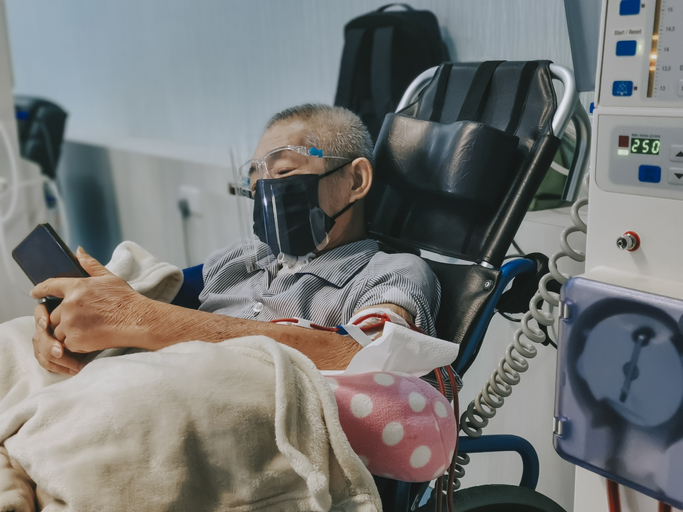
The medtech industry’s responsibility in addressing the socioeconomic barriers to accessing and succeeding on renal replacement therapy – MedCity News

The Centers for Medicare and Medicaid Services (CMS) has recognized the need to ensure equal care for socially and economically disadvantaged chronic kidney disease (CKD) and end-stage renal disease (ESRD) patients by proposing changes to the current model that directly addresses health equity. However, CMS cannot act in a silo. While payers, health systems and providers have a role to play in alleviating socioeconomic barriers to accessing and succeeding on CKD care, the medical device industry also has a unique ability to build solutions that promote care equity.
Human-centered design with usability and versatility in mind
There is a need for dialysis devices that are appealing to patients and suitable for use across the entire continuum of care. Medical device innovators and manufacturers must ensure that products are designed to be used in diverse settings by everyone regardless of socioeconomic background, training, or ability.
This means carefully considering the strengths and limitations of each care setting including, hospitals (critical care and wards), dialysis clinics, long-term care facilities or a patient’s own home. Further, consideration should occur through the lens of the ongoing Covid-19 pandemic, which has had devastating impacts on this often frail patient population. If a patient participating in home hemodialysis (HHD) requires assistance and, due to the pandemic, cannot be seen in a hospital, care teams need to ensure they can provide home assistance when necessary. For patients relying on in-center hemodialysis (ICHD), which is particularly risky given that it requires frequent travel and close contact with other patients and providers, caregivers need to be prepared to service these patients in a safe, compliant, and efficient manner.
The medical device industry’s role in finding solutions to these challenges lies in its ability to create machines that can provide the level of care that any one patient needs, even under extenuating circumstances. Doing so requires manufacturers to consider power outages, non-traditional settings and even insufficient staffing. It is similarly important that manufacturers are mindful of challenges that patients may face using their products, including language barriers, learning styles and physical handicaps.
All these solutions rely on implementing proactive (vs. reactive) approach to care. To be truly prepared for whatever the next wave of pandemic living brings, early CKD detection needs to be accessible for all patients, including screening underserved populations for CKD and advocating for access to affordable diagnostics and disease modifying treatments. Indeed, the biggest gains in CKD care will come from the early detection and treatment of people who have incomplete access to primary care.
Advocate for improvements in reimbursement for home-based care
Home HD has been shown in many studies to be more effective than ICHD for patient quality of life and in some cases survival. This is because increased frequency of treatment at home more closely mirrors how healthy kidneys function. It goes without saying that the longer the gap between treatments – as happens with ICHD over the weekend – the more the patient suffers. However, Home HD may not be easily accessible to all patient populations, especially for those with a lower income—Home HD can have increased patient borne costs in terms of increased electricity and water needed to run dialysis machines. Additionally, patients may not have the space and infrastructure at home to dialyze comfortably and safely. From a payer perspective, however Home HD has been consistently shown to be less costly as less is spent on physical infrastructure, skilled healthcare personnel and patient transport.
Aside from the more obvious solutions that include rallying for more patient oriented reimbursement and removing the red tape involved so that HCPs can provide home-based care, medical device manufacturers must also offer a turnkey solution for home-based therapy that includes servicing the device in a door-to-door model. Similarly important, manufacturers must also recognize that not all patients have the reliable internet access needed for successful home-based care. For easy integration of digital health capabilities and analytics, device manufacturers should consider relying on embedded connectivity to mobile providers, relieving patients from using their own WIFI or cellular data.
Though CMS’s recent proposal is a foundational step toward providing more equitable access to CKD care, the agency’s success in facilitating change is directly tied to policy details, implementation, patient-driven performance metrics, and holding ESRD providers publicly and financially accountable through performance-based reimbursements. Achieving equitable access to CKD care is surely a multifaceted challenge, but it is one worth solving, and we have the tools to do so.
Photo: Edwin Tan, Getty Images